- Home
- > Nature online
- > The science of natural history
- > The scientific process
- > Fieldwork
- > Collecting plants
Primary navigation
Collecting plants
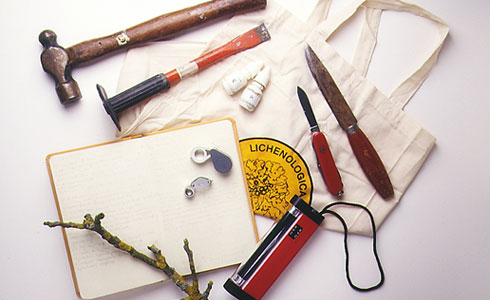
A field equipment kit, including a stout hammer and chisel, and knives, which are essential for collecting lichens on rocks. The kit also contains a hand lens for examining things in more detail and a spot test reagent, which is for testing the presence of certain substances, like proteins. The collecting bag is to hold specimens for transport back to the laboratory.
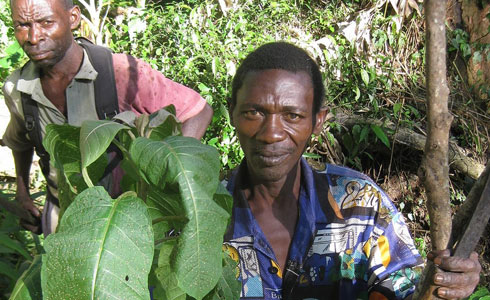
One of the best ways of finding out about plants in different parts of the world is to talk to local people. They may be able to give information about where to find a particular species and other tips on the region's wildlife. Image © M. S. Vorontsova
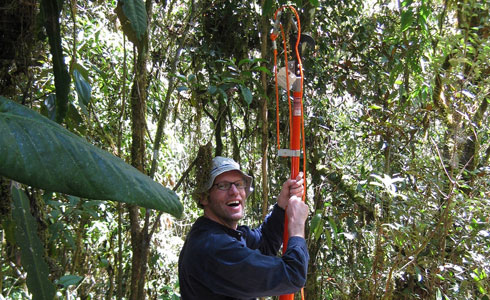
It can be difficult to collect samples from trees, creepers and other plants growing high above the ground. Here, clippers on a pole are being used to collect samples that are out of reach. Image © M. S. Vorontsova

To reach even higher, collectors sometimes have to climb trees, to reach flowers and leaves growing far above the ground. Image © M. S. Vorontsova

As well as taking a sample of the plant, it is important to record extra information in a notebook, such as details of the location, time and date when the plant was collected.
New techniques for recording information are becoming available all the time. Today, GPS devices are often used to record the exact location where a plant was found. This means that other specialists can go back to the same place to look at the plant again, if it is thought to be unusual or interesting in some way. Image © M. S. Vorontsova

Taking photographs is a way of recording live plants in their natural habitat. This is important because a plant's appearance changes dramatically once it has been pressed and dried for storage in the Museum's collections. Here, a scientist is photographing moss on Reunion Island in the Indian Ocean.
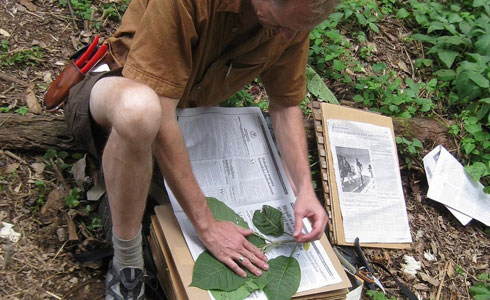
Pressing plants between sheets of newspaper preserves them until they can be dried and it can easily be done in the field. They can also be soaked in alcohol to preserve them. Image © M. S. Vorontsova

Some plants are too large to fit between sheets of newspaper or in a press. They have to be carefully folded to fit, without damaging key features. Image © M. S. Vorontsova
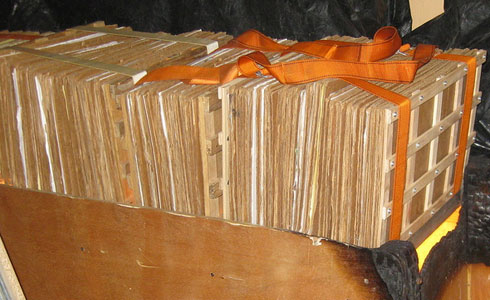
Plants have to be dried to preserve them for study. Here an electric drier is being used to remove the moisture from several presses full of plants. Gas-powered driers can also be used. Image © M. S. Vorontsova
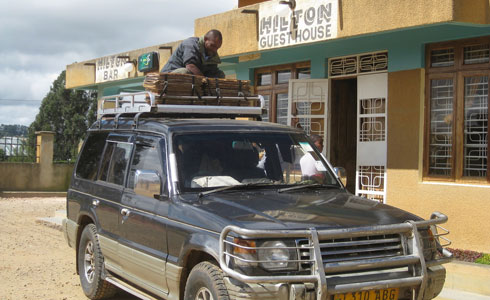
An electric drier is not always available in the field. Here, plants are being dried by tying plant presses to a car roof on a sunny day, so air can pass through holes in the cardboard when the car gains speed. Image © M. S. Vorontsova
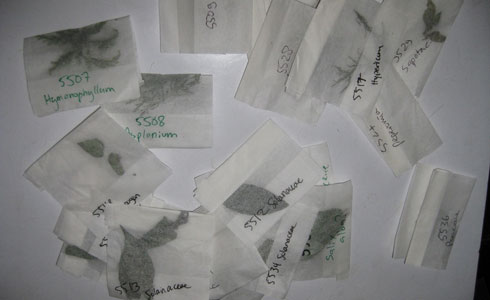
Silica gel, which can look like a white powder or coloured crystals, can be used to dry out plant tissue immediately so the DNA does not break down during the slow drying process.
Researchers may want to study the DNA later, as well as looking at the physical features of the plant that are visible with microscopes and the naked eye. Image © M. S. Vorontsova
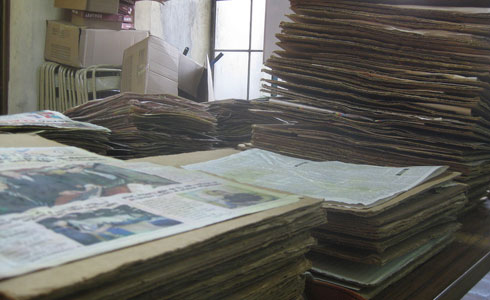
At the end of a fieldwork trip, researchers may have many sheets of dried plants to sort through and examine. Image © M. S. Vorontsova
Related information
Toolbox

Until 1938 whale carcasses were buried in the Museum grounds so that their flesh would decay leaving only the skeletons.
- Contact and enquiries
- Accessibility
- Site map
- Website terms of use
- © The Trustees of the Natural History Museum, London
- Information about cookies
- Mobile